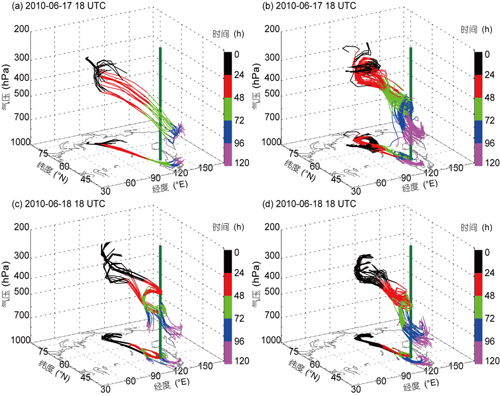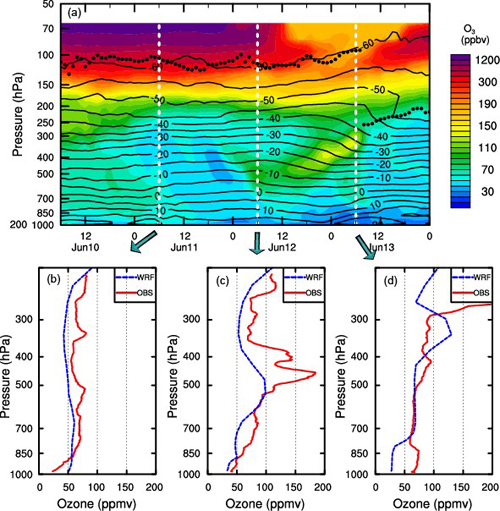Key Processes during the Stratosphere-Troposphere Exchange in Cut-off Low Systems over Northeastern Asia
Date:2015-05-15
The greenhouse gases produced by human activities have a significant influence on global climate and environment change. The gases transporting from the troposphere into the stratospherewill influence the stratosphere atmospheric processes through physical, chemical, radiation processes and vice versa. The stratosphere-troposphere exchange is a key process to solve this problem. Stratospheric intrusion and tropopause folds are key mechanisms of stratosphere-troposphere exchange. Although there have been many studies on tropopause folds that occurred over Europe and North America, a very limited amount of work has been carried out over northeastern Asia.
Scientists from the Institute of Atmospheric Physics (IAP) used the ozone profiles obtained from the Global Positioning System Ozone (GPSO3) and “IAP Ozonesondes” produced by IAP, CAS at Changchun Observatory (43.9°N, 125.2°E), and reanalysis data to analyze the key transport processes (e.g. deep stratospheric intrusion, tropopause fold) caused by the COL. The Weather Research and Forecasting model with Chemistry (WRF-Chem), and trajectory model (TRAJ3D) were also applied to simulate these processes.

Three-dimensional structure of trajectory clusters corresponding to the COL at 18:00 UTC on June 17 ((a), (b)) and June 18 ((c), (d)). Colors represent elapsed time after respective trajectories launch time. Green vertical lines mark the position of the ozonesonde station. (Image by IAP)
Trajectory simulation suggested that during the first stage of COL, deep stratospheric intrusion associated with strong northerly wind jet on the west side of the upper-level trough transported ozone-rich air from the polar lower stratosphere into the middle and lower troposphere in the mid-latitude, and increased the ozone concentration there. During the mature stage of the COL, stratospheric air was transported counterclockwise into the troposphere.
Ozonesondes observed an ozone-enriched layer with thickness of 3 km and an ozone peak of 180 ppbv at 6 km in the troposphere. This ozone peak was caused by a tropopause fold associated with a jet stream at the eastern flank of the East Asian trough. By analyzing the ozone data from the ozone monitoring instrument and model simulations, it was found that a high ozone concentration tongue originating from the lower stratosphere at high latitude (near central Siberia) intruded into the middle troposphere over Changchun between 5 and 8 km on 12 June 2013.

Time series of ozone mixing ratio (ppbv, color scale), temperature (°C, contours), and primary tropopause from the WRF-Chem model over Changchun Station during 10–13 June 2013 (a). Dashed white lines mark the locations of the balloons. Comparisons of WRF-Chem ozone profiles interpolated to the observation station (blue) with ozonesonde profiles (red) at 0600 UTC on (b) 11 June, (c) 12 June, and (d) 13 June. (Image by IAP)
The findings have recently been published in Science China: Earth Sciences and Advance in Atmospheric Science.
Citation:
Li D, Bian J C, Fan Q J. 2015. A deep stratospheric intrusion associated with an intense cut-off low event over East Asia. Science China: Earth Sciences, 58: 116--128, doi: 10.1007/s11430-014-4977-2. http://159.226.119.58/aas/EN/10.1007/s00376-015-5022-x
Li, D., and J. C. Bian, 2015: Observation of a summer tropopause fold by ozonesonde at Changchun, China: Comparison with reanalysis and model simulation. Adv. Atmos. Sci., doi: 10.1007/s00376-015-5022-x, in press. http://earth.scichina.com:8080/sciDe/EN/abstract/abstract515936.shtml
Contact: Dr. BIAN Jianchun, bjc@mail.iap.ac.cn
